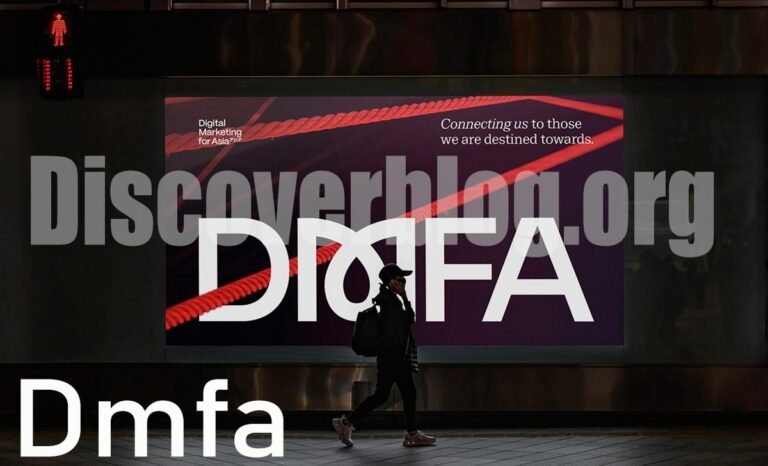Introduction
In today’s fast-moving industrial world, certain chemicals play a huge role behind the scenes. One such important compound is DMFA, short for Dimethylformamide. While the name may sound technical, its impact touches industries like pharmaceuticals, textiles, electronics, and chemicals.
DMFA is valued because it is a versatile solvent. It dissolves many substances, helps in chemical reactions, and supports the production of products we use daily. From creating medicines to processing synthetic fibers, DMFA stands out as a reliable industrial partner.
In this article, we’ll explore what DMFA is, its properties, applications, benefits, risks, safety guidelines, and even its future potential. Whether you are a student, professional, or simply curious, this guide will help you understand why DMFA matters.
What is DMFA?
DMFA stands for Dimethylformamide, an organic compound widely used as a solvent. Its chemical formula is C₃H₇NO, and it belongs to the group of amides.
One of the main reasons DMFA is important is its ability to dissolve a wide range of organic and inorganic compounds. Unlike many solvents, it is both polar and stable, making it ideal for sensitive reactions.
In simple words, think of DMFA as a helper in the laboratory and factory. It allows different substances to mix, react, and form products that would otherwise be hard to create.
Key Properties of DMFA
To understand why industries value DMFA, let’s look at its unique properties:
-
Appearance: Clear, colorless liquid
-
Odor: Faint, almost fishy smell
-
Boiling Point: About 153 °C (307 °F)
-
Solubility: Mixes easily with water and many organic solvents
-
Stability: Remains stable under most conditions
These properties explain why DMFA is considered such a powerful and flexible solvent. Its ability to dissolve diverse materials makes it useful in multiple industries.
Common Uses of DMFA
DMFA is often described as a “universal solvent” because of its wide range of applications. Some of the most common uses include:
-
Pharmaceuticals – Used in drug development and production.
-
Textile Industry – Helps in making synthetic fibers like acrylic and polyurethane.
-
Electronics – Supports production of circuit boards and coatings.
-
Chemical Reactions – Serves as a medium for complex chemical synthesis.
-
Adhesives and Coatings – Found in paints, finishes, and glues.
Its wide usage shows how deeply DMFA is integrated into modern industrial processes.
Why Industries Depend on DMFA
Industries rely on DMFA for three main reasons:
-
Efficiency: It speeds up chemical processes.
-
Versatility: Works across pharmaceuticals, textiles, and electronics.
-
Reliability: Provides consistent results without breaking down easily.
For example, in drug research, DMFA helps scientists test new compounds quickly. In textiles, it supports large-scale fiber production. In electronics, it keeps quality standards high for delicate components.
Benefits of Using DMFA
When handled properly, DMFA offers several advantages:
-
Excellent Solubility: Dissolves a wide range of compounds.
-
Thermal Stability: Remains effective at high temperatures.
-
Chemical Compatibility: Works with acids, bases, and salts.
-
High Purity: Ensures reliable results in sensitive industries like pharma.
These benefits explain why DMFA has earned its reputation as a must-have solvent.
Health and Safety Concerns of DMFA
While DMFA is highly useful, it does come with risks. Exposure to DMFA can affect human health if not managed carefully. Some concerns include:
-
Skin Contact: Can cause irritation and absorption through the skin.
-
Inhalation: May lead to nausea, headaches, or dizziness.
-
Long-Term Exposure: Linked to possible liver damage.
This is why safety guidelines stress protective equipment like gloves, goggles, and proper ventilation when handling DMFA.
Environmental Impact of DMFA
Like many chemicals, DMFA poses environmental risks if released carelessly. It can contaminate water sources, harm aquatic life, and contribute to pollution.
To reduce impact, industries use waste treatment systems, recycling processes, and emission controls. Governments also regulate its use to ensure safety for both people and nature.
Safe Handling and Storage of DMFA
Proper handling is key when working with DMFA. Here are some best practices:
-
Always wear protective gear.
-
Use in well-ventilated areas.
-
Store in tightly sealed containers.
-
Keep away from heat and open flames.
-
Dispose of waste responsibly following regulations.
Following these steps protects workers and the environment from unnecessary risks.
Alternatives to DMFA
With growing environmental awareness, researchers are exploring safer alternatives. Some replacements include:
-
NMP (N-Methyl-2-pyrrolidone)
-
DMSO (Dimethyl sulfoxide)
-
Green solvents made from renewable sources
While these alternatives show promise, DMFA remains popular due to its effectiveness and affordability.
The Future of DMFA
Looking ahead, DMFA will continue to play a major role in industries. However, advancements may focus on making its use safer, cleaner, and more sustainable.
Expect stricter safety standards, better recycling methods, and the rise of eco-friendly alternatives. Industries that adapt early will stay competitive while protecting both people and the planet.
FAQs About DMFA
1. What does DMFA stand for?
DMFA stands for Dimethylformamide, a widely used industrial solvent.
2. What is DMFA used for?
It is mainly used in pharmaceuticals, textiles, electronics, adhesives, and coatings.
3. Is DMFA dangerous?
Yes, it can be harmful if inhaled, ingested, or absorbed through the skin. Proper safety measures are essential.
4. Can DMFA be replaced with safer solvents?
In some cases, yes. Alternatives like DMSO and NMP are being explored.
5. How should DMFA be stored?
Store in sealed containers, away from heat, with good ventilation.
6. Why is DMFA important in pharmaceuticals?
It helps dissolve compounds and supports drug development processes.
Conclusion:
DMFA is a powerful solvent that plays a vital role in today’s industrial world. From creating life-saving drugs to supporting textiles and electronics, its contributions are undeniable.
But with great benefits come responsibilities. Understanding the risks, following safety protocols, and exploring eco-friendly alternatives ensure that DMFA remains a valuable tool without harming health or the environment.
